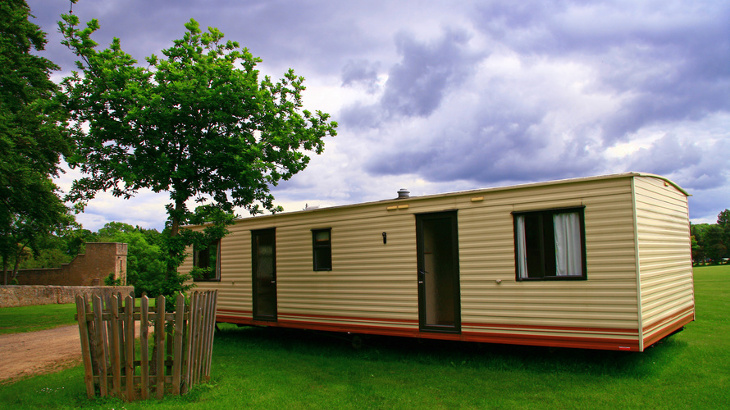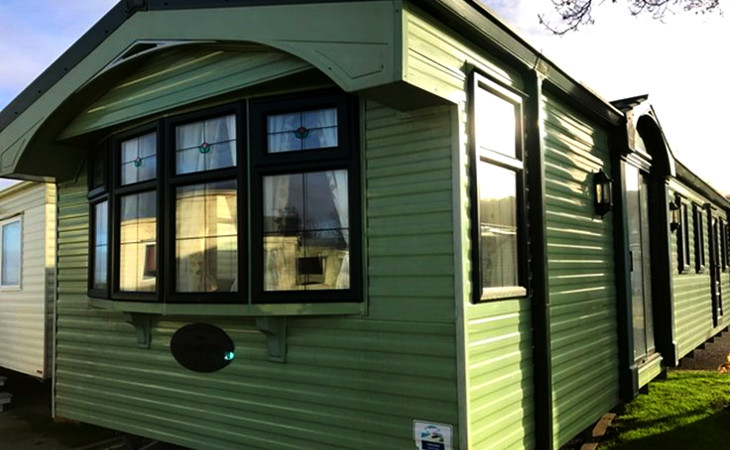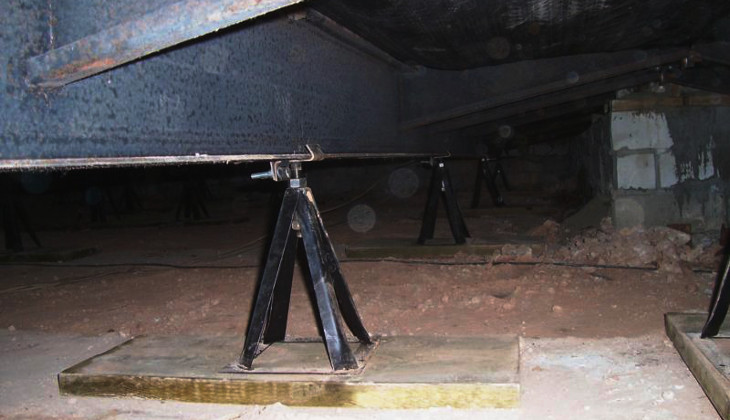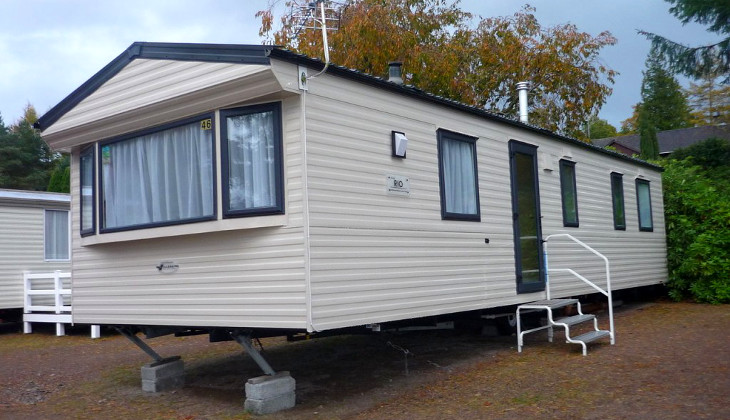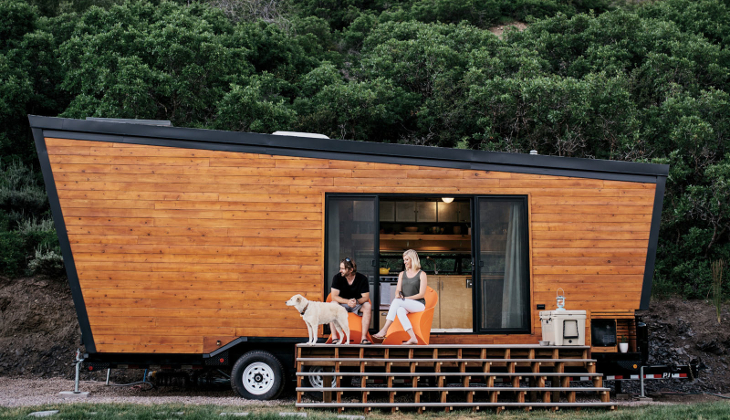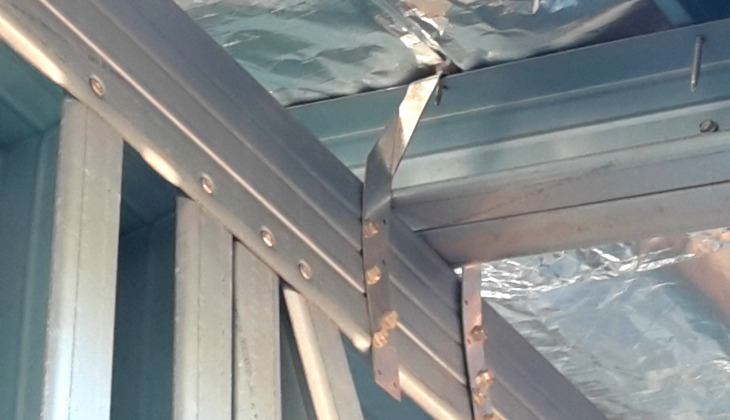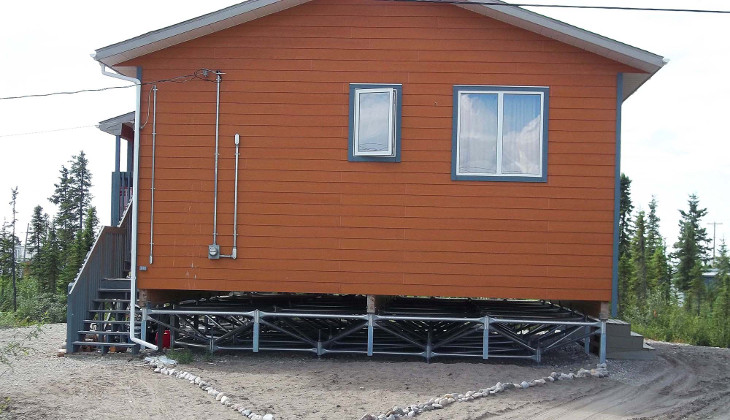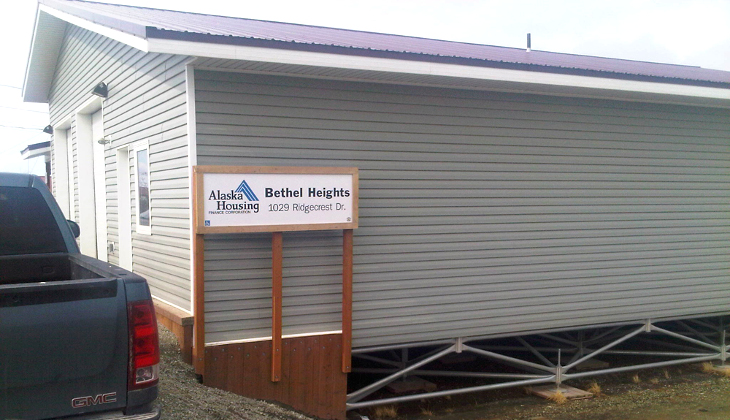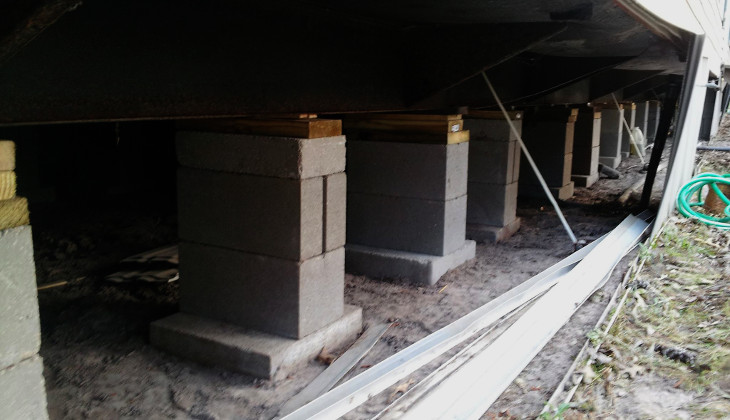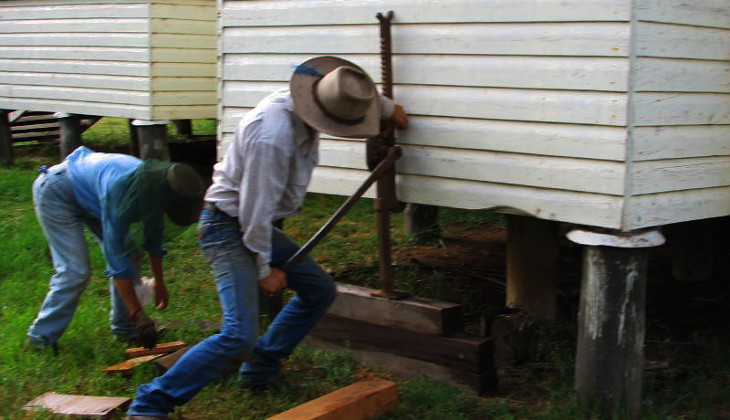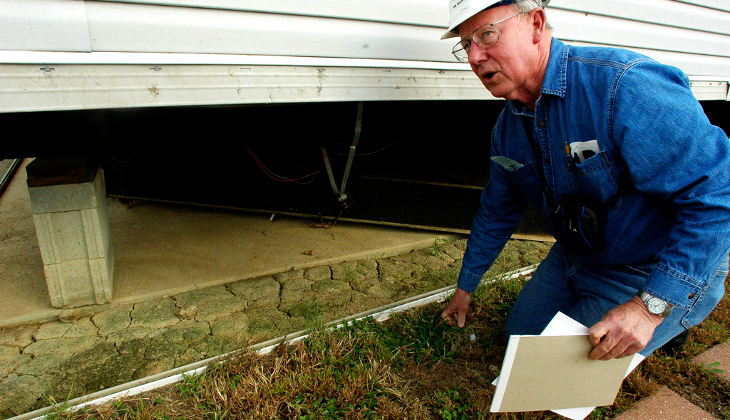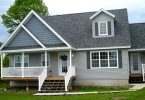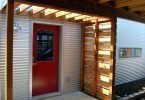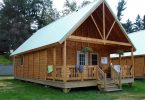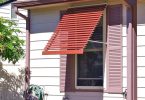When strong winds blow, mobile home anchors and tie downs keep a home stable and secure. If you live in a mobile home, you already understand the routine when a hurricane is approaching; pack up and run to safer places before the wind starts hauling.
However, hurricane preparations for a mobile homeowner should start long before the windstorm is on its way. The preparation activities include ensuring that your mobile home is correctly anchored and regular check up on the anchoring system to make sure that it’s robust.
Before you start the job of anchoring your mobile home, you must understand why anchoring is important and get to know the basic requirements for anchors. Also, you need to know all the components that make up a home anchoring system. Keep in mind that it’s important to consult with a mobile home installation expert if you have questions and doubts regarding your home installation.
Importance of anchoring your mobile home
Generally in high winds, mobile homes are much less stable and safe than the site-built homes. In fact, mobile homes that were built before 1977 should be considered less safe because they vary in construction quality as there were no unified construction standards. These homes were not properly anchored. Therefore, during hurricanes, these homes could easily be blown away or destroyed.
However, recent mobile homes are constructed and installed in accordance with the strict HUD code. This regulation has ensured that mobile home construction, installation and maintenance meet set standards to enhance mobile home safety.
Note that mobile homes must have tie downs and anchors to keep them in place during heavy winds. These homes are lighter than the site-built homes and can easily be affected by strong winds. They have flat sides and ends and are built on frames rather than stone and concrete foundations.
All mobile homes are elevated or placed on top of a foundation system or some sort of pier. When strong wind gets under the home, it can easily lift it up. Also, strong winds passing on top of the home can result in uplift force and lift the home off the ground especially if the home has a weak anchoring system. This can result in serious damage to your home’s structure, loss of valuables and even harm to those living in that home.
To enhance your home’s resistance to wind force, you need a robust anchor system. This system should strongly hold your home to the ground to make sure that it can’t be easily lifted up. For your home to effectively resist the wind force, it must have strong tie downs and strong anchors.
In older homes, you need an over-the-top or the vertical tie down to compensate the possible uplift wind force. Frame tie down or a diagonal tie down is necessary to enhance the home’s resistance to both lateral and uplift wind force. Keep in mind that double-wide mobile homes only need the diagonal tie down while single-wide mobile homes need both vertical and diagonal tie downs.
Tie downs are systems of heavy-duty cables and anchors used to stabilize a mobile home during strong winds. If these tie downs aren’t properly installed and maintained, the chances are that the home’s capacity to resist sliding and overturning as a result of strong winds will be significantly reduced.
What are the tie down requirements for mobile homes?
All mobile homes should be secured according to the manufacturer’s specifications. The manufacturer should specify the recommended type of anchorage, any precautions to be taken and anything else you need to keep in mind. You should always ensure that these specifications are adhered so you can avoid making the property warranty void.
In some cases, people buy used mobile homes. In such cases, it’s difficult to get the manufacturer’s home installation and anchorage manual. Therefore, the home must be tied down in accordance with the regulations of the state where you live. This means that you should get a mobile home installation expert who understands the housing code of your state.
The type of tie down you choose will depend on the type of mobile home you own. Both the single and double-wide mobile homes require diagonal tie downs. Keep in mind that single-wide mobile homes are vulnerable to sideways (lateral) wind forces because they are narrow. To overcome this, the houses require vertical tie down.
The number of tie downs required for your home will be determined by the wind zone where your home is located. To know which zone your house is designed to be located, check the home’s data plate. There are three wind zones for mobile houses and are noted with Roman Numbers: I, II, and III. The larger part of the United States is in Zone I with coastal and southern hurricane prone areas upgraded to Zone II.
Keep in mind that a home constructed according to Zone I standards can’t be placed in an area that requires Zone II standards. However, you can place a Zone II mobile home in Zone I and Zone III mobile home in Zone II.
Homes located in strong winds-prone areas tend to have more tie downs than those found in areas that have less wind. Therefore, you should understand the mobile home construction and anchor requirements for different areas. D-sticker mobiles homes (ones designed to be installed within 15,000 feet of the coastline in wind zone III) have extra installation requirements.
Other factors such as the size of your home and the manufactured home regulatory framework in your state will also determine the number of tie downs required for your home.
Types of tie downs
Mobile home tie downs are of two types;
Over-the-top tie down
These are straps that are placed over the siding and the roof. In older mobile homes, these straps were visible on the roof. However, in the current mobile homes, these straps are concealed under the exterior siding of metal roof.
The straps ends normally hang under the mobile home. Though this is an effective way of ensuring that your home sits firmly on the ground, it detracts from the appearance of your house.
Frame anchors
In this type of tie down, the straps are usually attached to the home’s frame rails. More recent mobile homes are structurally superior to old mobile homes and can be secured with frame anchors only. Also, double-wide mobile homes are heavy and can resist wind without the aid of over-the-top tie downs. But they must have frame anchors.
Components of tie downs
Every tie down system must have the following components;
Ground anchors
These are strong metallic rods that are driven into the ground to tightly secure the tie down in place. The choice of the mobile home tie down anchors depends on the soil type in the area where you want to place your mobile home.
Hook-up and tension devices
These devices work together with the tie downs. You must connect the tie down to the anchor with a system that allows adjustment of the tension. This system should be weather-resistant and strong enough to support the tie down and the anchor.
You should fasten the tie down to a ground anchor with drop-forged turnbuckle. This turnbuckle must have welded or forged eyes instead of hook ends as the tie downs can easily slip off from the hooks.
If the over-the-top tie downs are exposed, you must place some roof protectors under the strap at the edge of the roof. The roof protectors are also known as thimbles, buffers or roof brackets. They prevent the cable or the strap from causing damage to the roof and also prevent the edge of the roof from cutting the strap.
Commercial roof protectors are available in retail shops and help in distributing the pressure of the strap. If you don’t want to spend money on commercial protectors, you can use pieces of wood blocks.
The tie down system must be inspected regularly and if any issue is noticed, the right correction measure should be taken immediately. Here are tips to inspecting the tie down system.
- Check if the straps are loose. They should be tight and straight. To be on the safe side, consult the mobile home manufacturer’s instructions to determine the right tension of the strap.
- Replace anchors and straps if you notice signs of damage or corrosion
- Check for kinked or bent straps. This means that they are not properly installed and could invite danger, especially during strong winds.
- Always protect the straps at the sharp edges with radius clips
It’s important to contact an expert in mobile home installation to inspect your home. This way, the expert can help in identifying any potential danger that might be caused by some anchorage mistakes and help correct them early enough.
How to anchor a mobile home
Installing tie downs and an anchor system isn’t difficult for most do-it-yourself homeowners. However, seeking experienced help to ensure that you are using the right anchor type for the soil conditions of the area is not a bad idea.
Also, the expert can help you to know whether you have chosen enough anchors for your area’s wind conditions, the right tension for the tie down and the right angles for the frame tie downs. To properly install tie downs and anchors, follow the following steps;
Step 1: Level your home
Whenever a mobile home is out-of-level, its weight becomes unevenly distributed. This makes the walls and floors buckle slowly, making it hard to close and open the windows and doors – the initial sign of foundation leveling problem. Other signs of leveling problems include cracks on the walls and the ceiling and bent skirting.
The following are some of the reasons a mobile home can slip out of level over time.
- Once you place a new home in a new area, the ground tends to respond to that weight over time. Within a year or two, you might notice that your home is out of level
- Organic debris such as big roots of a dead tree tends to rot slowly and allows soil to sink eventually. If the depression is big, then your home will get out of level.
- A channel of rain water under the home can erode the soil, making the piers to tilt.
- Mobile homes are not designed to carry additional weight as the site-built homes. Therefore, any additional weight on the mobile home roof can make the home to slip out of level.
When installing the tie-down and anchor system, you must make sure that your home is level. Otherwise, you will anchor it when it’s out of level, and this might result in difficulties in opening and closing the windows and the doors. Besides, a tilted home is more vulnerable to wind storm damage as compared to a level home.
To get your home back to level, follow the following steps. It is, however, advisable to contact an expert in mobile home installation to ensure that the tie down and anchor installation is done in accordance with mobile home construction standards.
- Remove the skirting from your house to access the piers on which the home supports sit. This is an optional step especially if you can access the piers of your home without removing the skirting.
- Start at the middle of your home to check the level at each pier. This requires you to have a level measuring tool.
- Place a long level at the pier nearest to the center and check the bubble in the center of the level. If this bubble is at the center of the level, then, the area is level. Repeat this for all piers in your home and mark the piers that are not level.
- Attach a plastic tube to a container with a capacity of about 19 liters and add water slowly into the container. Make sure that the water in the tube is at the same level as the bottom of the I-beam on the non-level pier. (this will serve as your level mark)
- Place a mobile home jack (not car jack) at the center on the pier where it will support the weight of the house.
- Raise the I-beam to the water level mark and check the home level to make sure that the home is back to the right level.
- Use wedges to slide under the beam to keep it level and support it when you remove the jack.
Step 2: check charts to determine your home’s wind zone
Every mobile home has a wind zone chart for its location. This chart will help you to determine the recommended number of anchors for your zone. You should perceive this number as the minimum and so, you can install more anchors if you wish. But you can’t install less.
Step 3: determine the soil type
One of the deadly mistakes that most mobile homeowners make during tie down and anchor installation is just assessing the soil type by just gazing at it. Keep in mind that some anchors should be installed at least five feet deep. Will your eyes assess the soil type all the way to five feet deep?
To be on the safe side, contact a building contractor to help you determine the soil type. Such contractors usually have the right tools to assess soil types. If you will attach the tie downs to a concrete foundation, make sure that the foundation is at least four inches thick.
Step 4: Choose the right anchors
Depending on the soil type of your mobile home area, you should choose anchors that are specifically designed for that soil type. For instance, auger anchors are designed to be used in both hard and soft soil. On the other hand, rock anchors or the drive anchors are designed to allow the attachment to a coral or rock base.
Step 5: select hook-up
Your choice of hook-up will depend on the type of tie down. If you opt for the over-the-top tie down, choose an appropriate tensioning device and the hook-up.
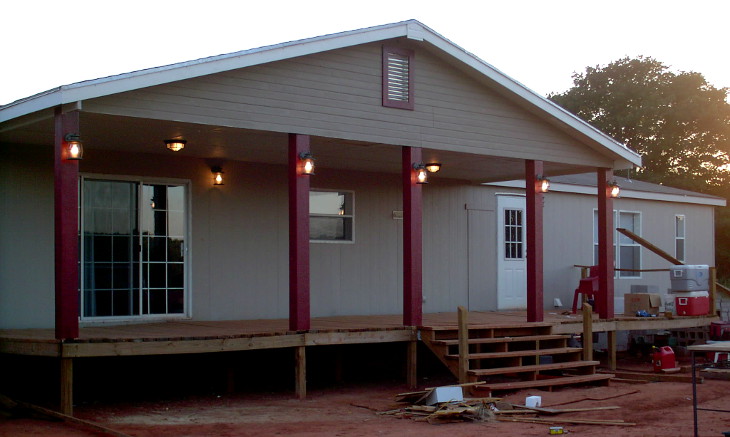
For the frame tie down, you must make sure that the house frame is strong and choose the recommended tensioning and hook-up device.
Step 6: locate the cables to your home
Before you start digging, you should first locate all underground electric wires, sewer, water pipers and more. This will help you to avoid the dangers associated with accidentally opening up these underground cables and pipes.
Step 7: place the tie downs in the right position
If you intend to install exposed over-the-top tie downs, position the cable or the strap over the roof rafter. You should also place a roof protector at the edges of the roof to prevent the roof edge from cutting the strap. Besides, you must ensure that the strap doesn’t cover the doors and windows.
Step 8: install the anchors
Each anchor comes with specific installation instructions and you must follow them carefully. For vertical tie down, the anchors are installed vertically. To ensure that the anchor doesn’t move sideways, you must install a stabilization device.
Step 9: Adjust the tension
Once you have poisoned your tie downs and installed the recommended number of anchors, it’s time to adjust the tension. While altering the tension from side to side, adjust the tie downs until you achieve the recommended tension for all the tie downs in your home.
Conclusion
Anchoring your mobile home makes it stronger and resistant to wind force. If you follow the steps and implement the tips given in this article, you can strengthen your mobile home and make it resistant to wind force.
What did we miss? Any tips you would like to share about installing mobile home anchors? Any questions that we didn’t mention in this article?
Share your thoughts with us so we can do our best to help everyone looking to complete this process.

